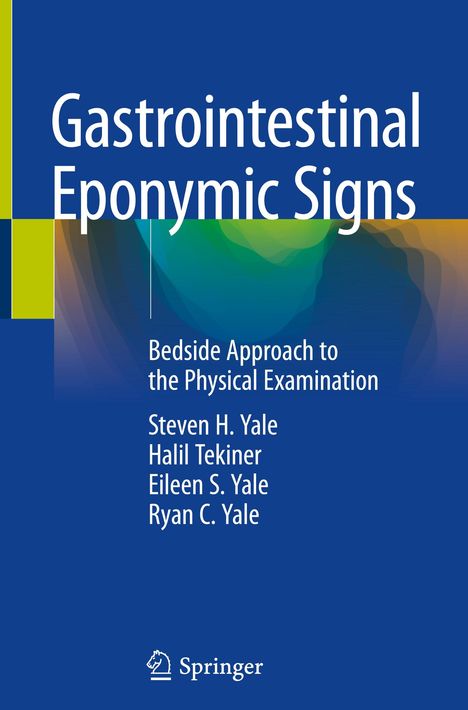Steven H. Yale: Gastrointestinal Eponymic Signs, Gebunden
Gastrointestinal Eponymic Signs
Buch
- Bedside Approach to the Physical Examination
- Verlag:
- Springer International Publishing, 01/2024
- Einband:
- Gebunden, HC runder Rücken kaschiert
- Sprache:
- Englisch
- ISBN-13:
- 9783031336720
- Artikelnummer:
- 11736104
- Umfang:
- 452 Seiten
- Nummer der Auflage:
- 24001
- Ausgabe:
- 1st edition 2023
- Gewicht:
- 922 g
- Maße:
- 241 x 160 mm
- Stärke:
- 29 mm
- Erscheinungstermin:
- 17.1.2024
- Hinweis
-
Achtung: Artikel ist nicht in deutscher Sprache!
Weitere Ausgaben von Gastrointestinal Eponymic Signs |
Preis |
|---|---|
| Buch, Kartoniert / Broschiert, Englisch | EUR 106,66* |
Klappentext
This book provides a novel method to teach eponymically named physical signs of the alimentary tract and intrabdominal organs. The focus is on the historical aspect of the named signs, how to perform the sign described by the author, and the pathophysiologic mechanisms involved in eliciting a positive test. The goal is to guide the reader to appreciate how these bedside signs provide a more profound understanding of the mechanism of disease. By doing so, they become more than simply rote memorization but an appreciation of how a direct hands-on assessment involving observing, engaging, listening, and touching the patient assists in diagnosis. Hence, these techniques provided the additional benefit of better connecting the practitioner to the patients and maintaining the art of medicine, which is rapidly losing its foothold within the medical community.This book will serve as a teaching tool for learners, teachers, and practicing physicians to preserve the artof the physical examination using a form of a case-based teaching and learning style approach. Illustrations throughout the text provide a visual representation of how to perform the sign. The authors believe this method of teaching and learning is more meaningful to the student in that they will be able to associate the name with the person's historical features, the sign, and its pathophysiologic mechanism(s).
Gastrointestinal Eponymic Signs is a must-have resource for medical students, residents, fellows, teaching faculty, and any practicing physician seeking to understand how physical examination signs assist in diagnosis.

